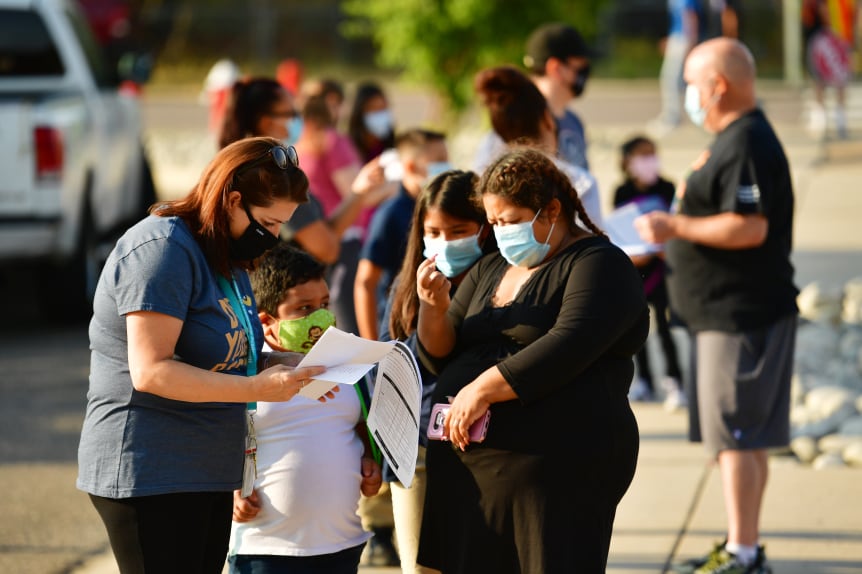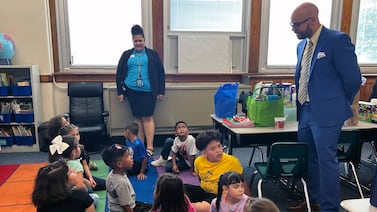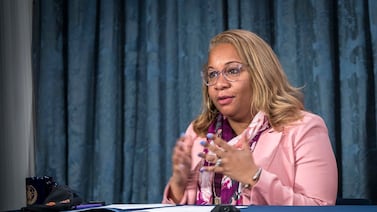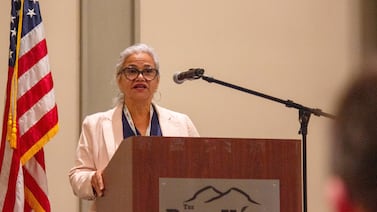Students in Colorado crossed school district boundaries a little more than usual during the pandemic school year, according to enrollment data.
Colorado’s open enrollment laws enable students to enroll in any school or district, even if they don’t live within that school’s attendance boundaries — although that choice can be subject to space available.
In a school year with many students working remotely and wide variability in the amount and quality of classroom and remote learning, enrollment trends changed. Many students never enrolled in schools and some who did, did not show up for classes.
Were more of Colorado’s families willing to cross district lines this year? Chalkbeat analyzed state enrollment data to learn more.
Here are the main takeaways from our analysis:
Slightly more students enrolled across district lines this school year than previously, but they mostly followed previous trends of movement.
In the past five years statewide, about 10% of students enrolled in a district that wasn’t their own, although that proportion slowly had been increasing. In the 2020-21 school year, it jumped to 12%. That represented a 9% increase, which was a bigger increase than in previous years.
Where students went didn’t change much, though. The districts that already had high numbers of out-of-district students had even more this school year, and those districts that typically lost a lot of students to other districts continued to see that.
Check out the map below to see the percentage of students in a district that are coming in from out of bounds, and the percentage of those leaving. The map also allows you to toggle to see the change from the previous school year to identify the districts that saw bigger changes during the pandemic.
Multi-district online schools have been big magnets
After the pandemic began, most school districts created versions of online or virtual learning, but a handful of districts already hosted large online schools that drew students from across the state. Overall, 13 of the 18 districts with those schools, known as multi-district online schools, experienced growth in choice in students as a percentage of their total enrollment.
The average percentage of students exercising their choice to attend districts with multi-district online schools was 33.1% this school year, up from 29.5% the previous year. That’s a bigger jump than the average “choice in” to districts without multi-district online schools. Among districts with those online schools, some of the largest jumps were in the Durango, Mapleton, and Byers districts.
Colorado Department of Education staff also has told the State Board of Education that applications to open those types of schools have increased.
The top 10 districts with the biggest increase in out-of-district students
The 10 districts that had the biggest growth in students coming in from out of district are spread across the state, but only one district, Mapleton, is in the Denver metro area. Mapleton officials point out that a large number of their outside students are those enrolled in the district’s multi-district online school, Connections Academy. But even without those numbers, the district has a high percentage of students from other districts.
The top 10 districts with biggest increase in students leaving for other districts
One of the districts whose percent of students leaving grew the most, Mountain Valley School District, also tallied one of the biggest jumps in the percent of students entering from outside. The district began the school year remotely, and pushed back its hybrid plan at least once, eventually returning to in-person learning by late fall.
Among the metro area districts:
Among the 15 metro area school districts, only two saw significant changes to the percentage of students coming in from out of district. One was Mapleton, where enrollment from outside districts jumped, and Sheridan, where students enrolling from outside decreased. The percentage of students leaving to attend school elsewhere changed slightly more than those who “choiced” into the 15 districts.






